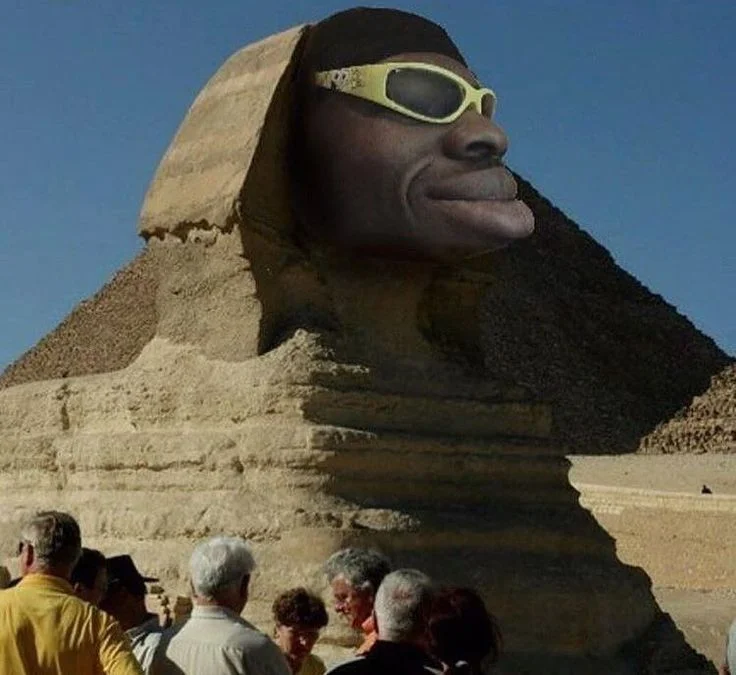In the vast landscape of the internet, where memes, trends, and viral content constantly emerge, one peculiar phenomenon has captivated the online community: cursed images. These enigmatic and unsettling pictures, often accompanied by the label “cursed,” have become a unique subculture within internet culture. In this article, we delve into the world of cursed images, attempting to unravel the mystery behind their allure and exploring the psychology and cultural context that surround them.

Defining Cursed Images:
Cursed images are digital or printed photographs that evoke an eerie or unsettling feeling in those who view them. Unlike traditional horror imagery, cursed images typically lack a clear narrative or context, leaving viewers puzzled and disturbed. The term “cursed” implies a supernatural or paranormal quality, suggesting that the images carry an otherworldly, negative energy. However, the true nature of what makes an image cursed is subjective and varies from person to person.
Characteristics of Cursed Images:
- Lack of Context: One defining feature of cursed images is the absence of context. Viewers are presented with a visual puzzle, devoid of any explanatory information. This ambiguity adds to the unsettling nature of the images, as the human mind tends to fill in the gaps with its own interpretations, often leading to discomfort and unease.
- Mundane Yet Unsettling: Cursed images often feature ordinary, everyday subjects, such as people, objects, or settings. However, these mundane elements are presented in a way that disrupts the expected norm, creating an unsettling contrast between the familiar and the uncanny. This subversion of the ordinary contributes to the overall sense of discomfort.
- Distorted Aesthetics: Cursed images frequently exhibit visual distortions, such as pixelation, blurriness, or unnatural lighting. These alterations can enhance the surreal and nightmarish qualities of the images, making them more challenging to process for the viewer’s brain.
Psychological Impact:
The fascination with cursed images stems from the human psyche’s innate curiosity and discomfort with the unknown. The lack of context and the distorted nature of these images trigger the brain’s primal response to uncertainty and potential threats. The mind attempts to make sense of the unfamiliar, creating a cognitive dissonance that elicits a visceral reaction.
Moreover, the ambiguity of cursed images allows for individual interpretation, making them a psychological Rorschach test of sorts. Viewers project their fears, anxieties, and personal experiences onto the images, resulting in a wide range of emotional responses. This subjective nature contributes to the viral spread of cursed images, as people share their interpretations and reactions, further fueling the mystery surrounding them.
Cultural Context:
Cursed images exist within the broader context of internet culture, where trends and memes evolve rapidly. The online community’s ability to create and propagate content quickly has given rise to various subcultures, and cursed images have become a distinctive niche within this landscape.
- Humor and Irony: Despite their unsettling nature, cursed images often elicit laughter and amusement. This paradoxical response highlights the role of humor and irony in internet culture. The juxtaposition of the eerie with the comical creates a unique form of entertainment that appeals to a generation accustomed to navigating the complexities of a digital world.
- Subversion of Expectations: Cursed images challenge traditional notions of visual aesthetics and storytelling. In an era saturated with polished and curated content, the subversion of expectations provides a refreshing departure from the norm. The appeal lies in the unpredictability and the ability to disrupt the monotony of scrolling through an endless stream of predictable images.
- Community Building: Cursed images foster a sense of community among internet users who share a common appreciation for the bizarre and unsettling. Online forums, social media groups, and dedicated websites have emerged where enthusiasts can curate and discuss their favorite cursed images. This sense of shared interest contributes to the longevity of the cursed images phenomenon.
Controversies and Ethical Considerations:
While cursed images have gained popularity within internet culture, they have also sparked controversies and ethical debates. Some argue that the fascination with unsettling imagery desensitizes individuals to real-world suffering and trauma. Additionally, the lack of context in cursed images raises concerns about the potential harm they may cause to vulnerable individuals who stumble upon them without warning.
It is crucial to consider the ethical implications of sharing and creating cursed images, especially in a digital landscape where content spreads rapidly and uncontrollably. Content creators and consumers alike bear a responsibility to be mindful of the potential impact such imagery may have on mental health and well-being.
Conclusion:
Cursed images, with their mysterious and unsettling allure, have carved out a unique space within internet culture. Their lack of context, distorted aesthetics, and psychological impact contribute to their widespread appeal. As a cultural phenomenon, cursed images reflect the evolving nature of online communities, humor, and the human fascination with the unknown.
While the debate over the ethical considerations of creating and sharing cursed images continues, their popularity underscores the internet’s capacity to embrace and celebrate the unconventional. As we navigate the ever-changing landscape of digital culture, cursed images serve as a reminder of the complex relationship between technology, psychology, and our insatiable curiosity for the strange and unusual.
